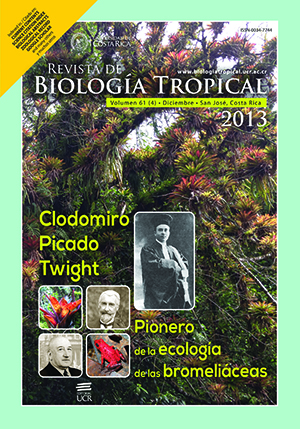Abstract
The mangrove crab Ucides cordatus is an important resource of estuarine regions along the Brazilian coast. U. cordatus is distributed from Florida, USA, to the coast of Santa Catarina, Brazil. The species plays an important role in processing leaf litter in the mangroves, which optimizes the processes of energy transfer and nutrient cycling, and is considered a keystone species in the ecosystem. Population declines have been reported in different parts of the Brazilian coast. In the present study we evaluated aspects of the population structure, sex ratio and size at morphological sexual maturity. We analyzed 977 specimens collected monthly over 24 months (2010-2012), in a mangrove of the Jaguaribe River, in the municipality of Aracati on the East coast of Ceará state, Northeastern Brazil. The study area has a mild semiarid tropical climate, with mean temperatures between 26 and 28oC. The area is located within the eco-region of the semiarid Northeast coast, where mangroves occur in small areas and estuaries are affected by mesomareal regimes. The population structure was evaluated by the frequency distribution of size classes in each month, and the overall sex ratio was analyzed using the chi-square test. Size at morphological sexual maturity was estimated based on the allometry of the cheliped of the males and the abdomen width of the females, using the program REGRANS. The size-frequency distribution was unimodal in both sexes. The overall sex ratio (M: F) (1:0.6) was significantly different from 1:1. Analysis of the sex ratio by size class showed that the proportion of males increased significantly from size class 55-60mm upward, and this pattern persisted in the larger size classes. In the smaller size classes the sex ratio did not differ from 1:1. The size at morphological sexual maturity was estimated at a carapace width (CW) of 52mm and 45mm for males and females, respectively. Analysis of the population parameters indicated that the population of U. cordatus in the Jaguaribe River mangrove is stable. However, constant monitoring of the population is required to detect any changes in the population attributes that may affect this stability.##plugins.facebook.comentarios##
Downloads
Download data is not yet available.






